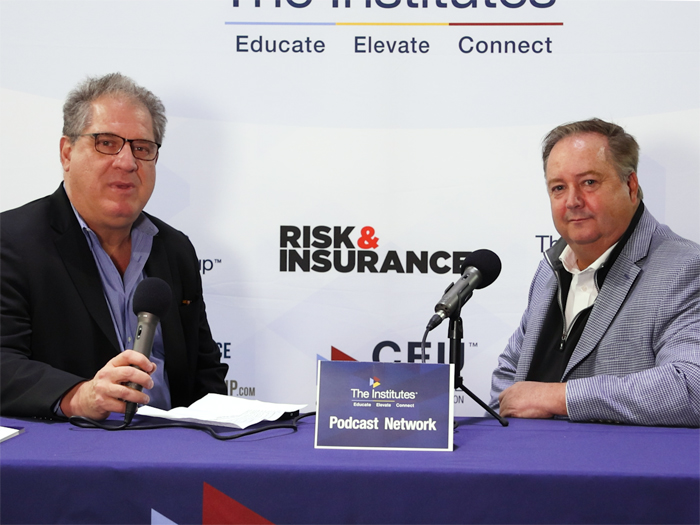Business Travel Risk
Beyond Brussels: Employee Crisis Communications

John Persons (not his real name) was in the Brussels airport around 8 am on March 26, 2016 when two bombs detonated, killing 31 and wounding around 300.
Fortunately for Persons, his family and his employer, a large U.S. insurance brokerage, he was not among the dead or injured.
His employer knew he was safe almost immediately. Expert Care, a service of American Express Global Business Travel, saw from his itinerary that he was scheduled to be in the Brussels airport.
Risk managers confirmed it by geolocating Persons through an app on his smartphone, then sent him a Short Message Service (SMS) message.
He texted back “1,” code for “I’m OK.” Expert Care immediately forwarded the good news to Persons’ employer.
A response other than “I’m OK” — say, “2” for “I need help,” “3” for “I’m not sure” or, more ominously, no response at all — would have triggered a much different scenario, said Evan Konwiser, vice president, digital traveler, American Express Global Business Travel.
“Travelers in the red column of the dashboard may need help,” he said.
Their companies’ crisis and travel managers would next decide how to proceed: phone call, follow-up texts and/or alerts to local authorities. As responses trickle in from travelers who had no or spotty mobile broadband connection, and those who were separated from their devices or were nowhere near the trouble spots, the travel manager would focus on the smaller group who really did need help.
Emergency Notification System “Handshake”
This kind of SMS “handshake” is high among companies’ preferred methods of communicating with its employees who get caught in crisis areas, said Matt Bradley, regional security director for the Americas, International SOS, because it’s fast, requires few keystrokes and transmits more reliably in low-signal situations than more data-hungry methods such as email and social media, although they also have their place in crisis communications.
Travel risk programs and emergency notification systems should deploy on smartphones, the technology every business traveler carries, said Hart Brown, senior vice president, practice leader, organizational resilience, HUB International.
“Local employees know the crisis response plan, but travelers are often left out of the briefing.” — Matt Bradley, regional security director for the Americas, International SOS
“Travelers leave other devices in their bags or forget to charge them.”
Smartphones can contain numerous mechanisms for locating and alerting travelers: GPS, apps, a programmed or installed panic button, email, social media and voice communications, Brown said.
“Every tool has strengths and weaknesses, so we pull in as much data as we can from every source,” Konwiser said. For example, “if a traveler missed his flight to Brussels, the itinerary data might not be updated, but we’d know he’s safe if he swiped his Amex corporate card at a concession stand in Heathrow 10 minutes before the explosions.”
Although social media, including Facebook and Twitter, can help break news — the suspicious package in the Atlanta airport that led to an evacuation on March 23, 2016, for example — it can also broadcast unverified information, such as the tweet about shots fired in the Atlanta airport during the same incident from someone claiming to be there, said Bradley.
International SOS, which provides medical and travel security risk services to many Fortune 500 clients, monitors Twitter for incidents, seeks verification and then takes action if appropriate.
Action may include sending information to clients’ travel managers or directly to travelers about an incident, always accompanied by advice.
During the terrorist shootings in Paris in November 2015, for example, “we told people, ‘Seek shelter. Don’t go back to your house or hotel. Get off the street.’ ” Information without advice, Bradley said, creates counterproductive anxiety and panic.
For those times when smartphone communications fail, companies should have a backup plan that includes instructions to go to a pre-determined rally point, such as a hotel or supermarket that provides shelter against rain, is usually open for business and that cab drivers can find easily. Rally points are never monuments, train stations or office buildings, which may themselves be targets, Bradley said.
Best Practices in Mature Global Travel
Companies whose employees travel extensively should have “overarching” crisis management plans, either housed at corporate headquarters or regionalized to branches, Hart said, and travel risk management plans that include a travel portal that aggregates flights, hotels, meeting times and locations, and arrival/departure dates.
“We want to see that aggregated data bundled and visualized on a map so risk managers can see where their people are.”
Of course, preparing employees before they leave should be part of the plan, said Bradley.
“Local employees know the crisis response plan, but travelers are often left out of the briefing. Before they leave, employees should know where hospitals are. Where the rally point is. Where the backup rally point is.”
Companies should be aware of risks — political unrest, infectious diseases, cultural flashpoints, weather — before they send employees, and those with major operations in a region should also invest in a journey risk plan that probes a region’s details: Is it safe to hail a taxi on the street? Does the employee need a driver? Where does she go and who does she call if there’s an issue?
Most insurance policies that involve foreign and business travel have response capabilities embedded in them, such as who to call and how to get help abroad, Hart said, but clients aren’t always aware of the information. Brokerage houses, he said, should educate clients on what duty of care looks like and how to implement crisis and travel risk plans.
“The broker’s role is to make sure policies connect carriers with response partners so the crisis plan works efficiently from beginning to end,” he said.










